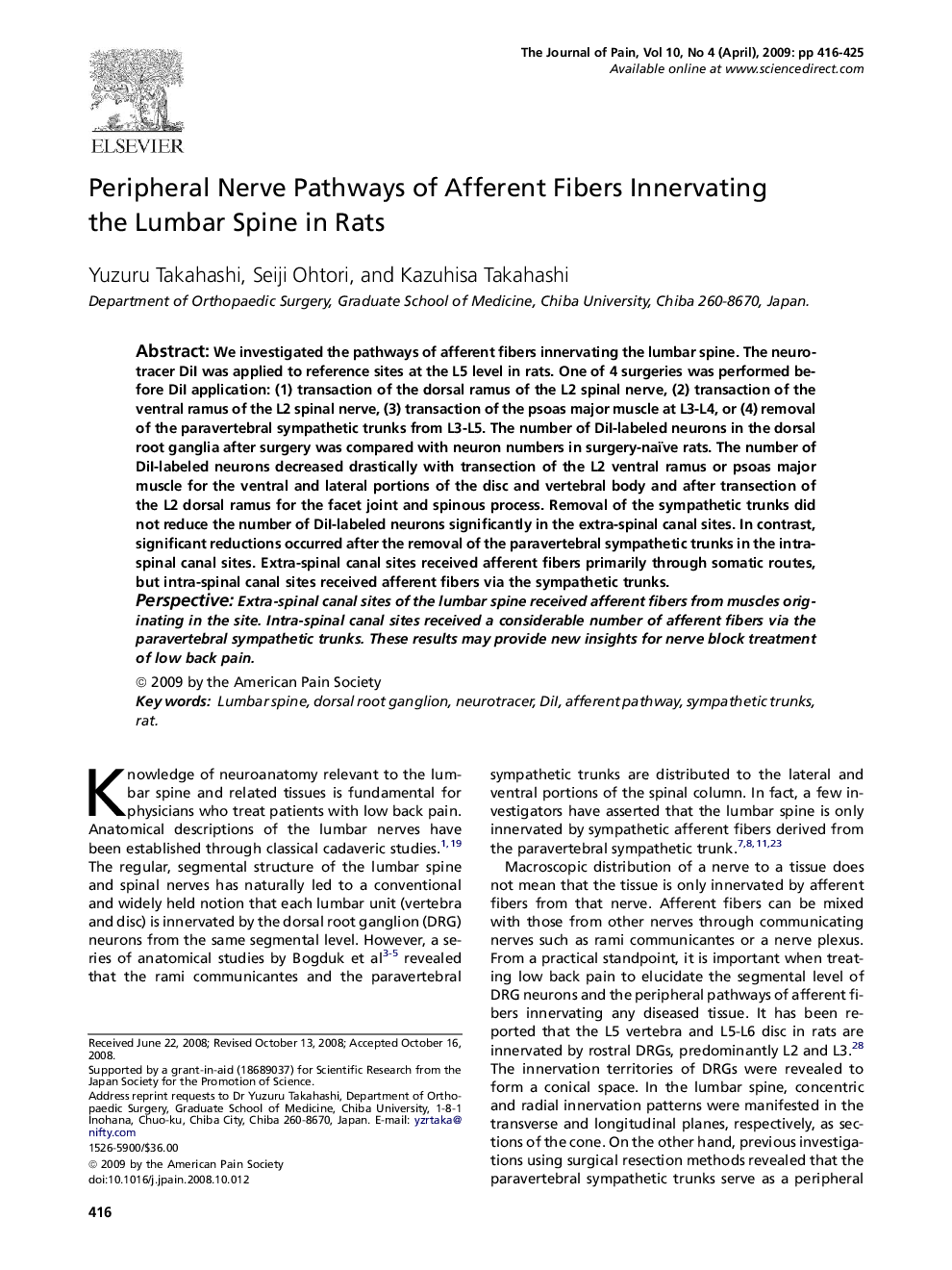| Article ID | Journal | Published Year | Pages | File Type |
|---|---|---|---|---|
| 2732788 | The Journal of Pain | 2009 | 10 Pages |
We investigated the pathways of afferent fibers innervating the lumbar spine. The neurotracer DiI was applied to reference sites at the L5 level in rats. One of 4 surgeries was performed before DiI application: (1) transaction of the dorsal ramus of the L2 spinal nerve, (2) transaction of the ventral ramus of the L2 spinal nerve, (3) transaction of the psoas major muscle at L3-L4, or (4) removal of the paravertebral sympathetic trunks from L3-L5. The number of DiI-labeled neurons in the dorsal root ganglia after surgery was compared with neuron numbers in surgery-naïve rats. The number of DiI-labeled neurons decreased drastically with transection of the L2 ventral ramus or psoas major muscle for the ventral and lateral portions of the disc and vertebral body and after transection of the L2 dorsal ramus for the facet joint and spinous process. Removal of the sympathetic trunks did not reduce the number of DiI-labeled neurons significantly in the extra-spinal canal sites. In contrast, significant reductions occurred after the removal of the paravertebral sympathetic trunks in the intra-spinal canal sites. Extra-spinal canal sites received afferent fibers primarily through somatic routes, but intra-spinal canal sites received afferent fibers via the sympathetic trunks.PerspectiveExtra-spinal canal sites of the lumbar spine received afferent fibers from muscles originating in the site. Intra-spinal canal sites received a considerable number of afferent fibers via the paravertebral sympathetic trunks. These results may provide new insights for nerve block treatment of low back pain.
